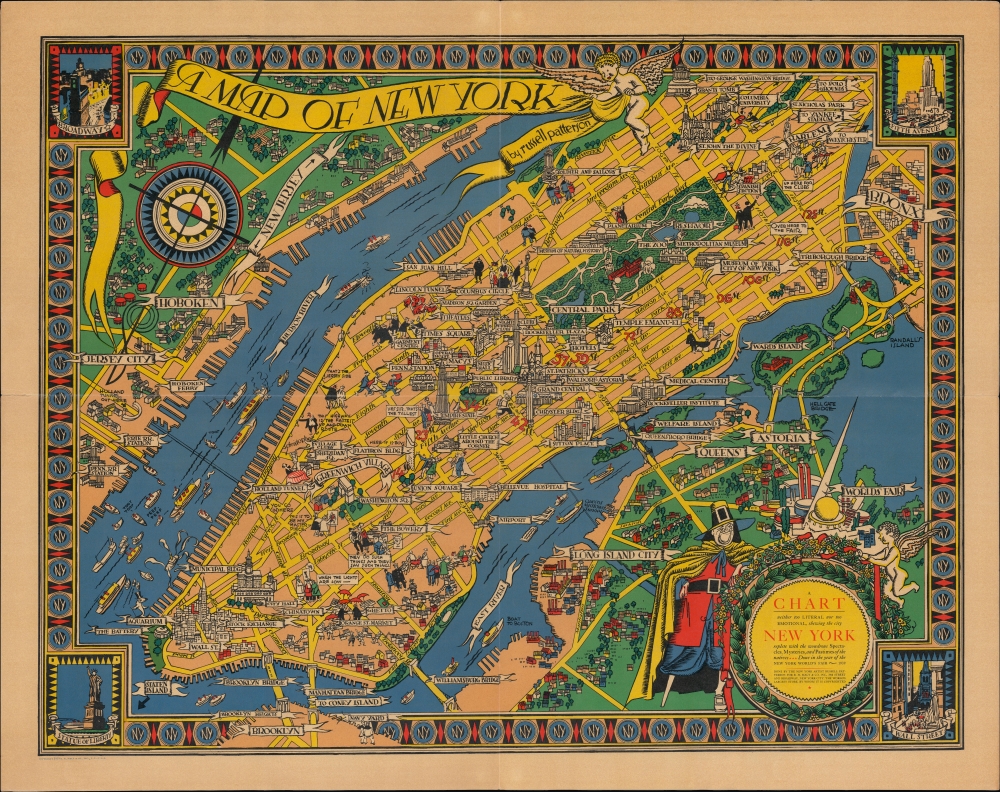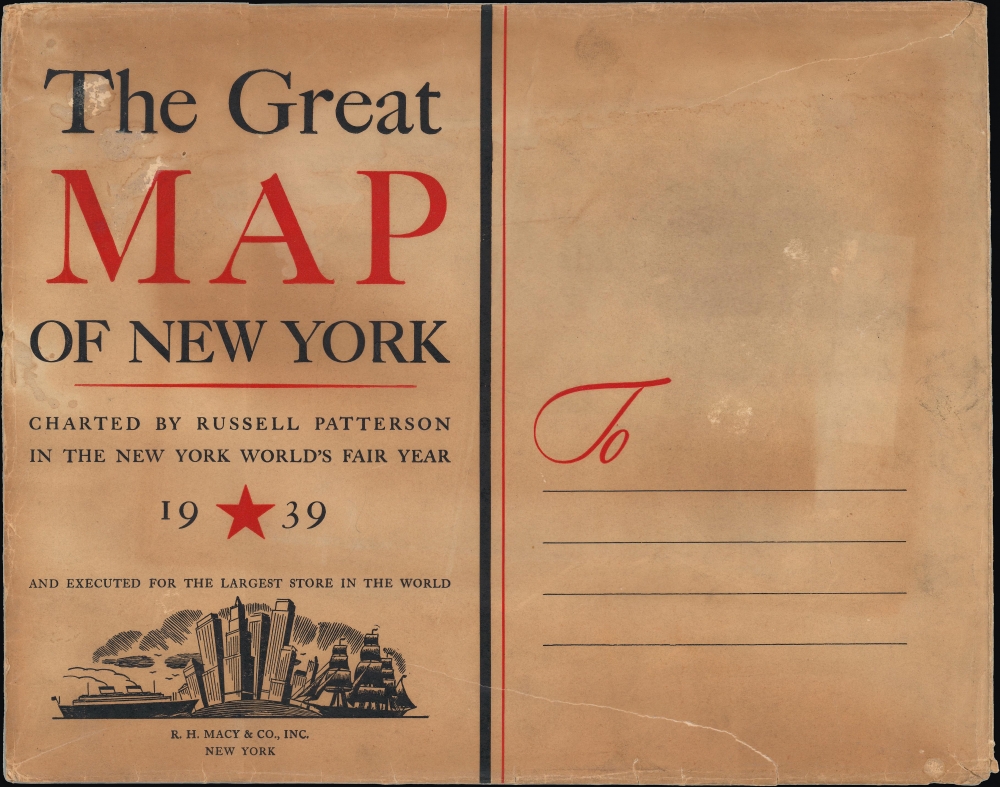Digital Image: 1939 Patterson Pictorial View of New York City, World's Fair
NYCWorldsFair-patterson-1939_d
Title
1939 (dated) 20 x 25.75 in (50.8 x 65.405 cm)
Description
FOR THE ORIGINAL ANTIQUE MAP, WITH HISTORICAL ANALYSIS, CLICK HERE.
Digital Map Information
Geographicus maintains an archive of high-resolution rare map scans. We scan our maps at 300 DPI or higher, with newer images being 600 DPI, (either TIFF or JPEG, depending on when the scan was done) which is most cases in suitable for enlargement and printing.
Delivery
Once you purchase our digital scan service, you will receive a download link via email - usually within seconds. Digital orders are delivered as ZIP files, an industry standard file compression protocol that any computer should be able to unpack. Some of our files are very large, and can take some time to download. Most files are saved into your computer's 'Downloads' folder. All delivery is electronic. No physical product is shipped.
Credit and Scope of Use
You can use your digial image any way you want! Our digital images are unrestricted by copyright and can be used, modified, and published freely. The textual description that accompanies the original antique map is not included in the sale of digital images and remains protected by copyright. That said, we put significant care and effort into scanning and editing these maps, and we’d appreciate a credit when possible. Should you wish to credit us, please use the following credit line:
Courtesy of Geographicus Rare Antique Maps (https://www.geographicus.com).
How Large Can I Print?
In general, at 300 DPI, you should at least be able to double the size of the actual image, more so with our 600 DPI images. So, if the original was 10 x 12 inches, you can print at 20 x 24 inches, without quality loss. If your display requirements can accommodate some loss in image quality, you can make it even larger. That being said, no quality of scan will allow you to blow up at 10 x 12 inch map to wall size without significant quality loss. For more information, it is best consult a printer or reprographics specialist.
Refunds
If the high resolution image you ordered is unavailable, we will fully refund your purchase. Otherwise, digital images scans are a service, not a tangible product, and cannot be returned or refunded once the download link is used.
Cartographer
Russell Patterson (December 26, 1893 - March 17, 1977) was a cartoonist, illustrator, and designer whose Art Deco-inspired works featured prominently in magazines of the 1920s and 1930s, to the extent that he is credited with helping create the 'flapper' image. Patterson was born in Omaha, Nebraska but his family relocated to Montreal during his childhood. He briefly studied architecture at McGill University and began submitting cartoons to local newspapers. He then moved to Chicago, attended some classes at the Art Institute of Chicago, and began working as an interior designer for upscale department stores in the city. Patterson then attempted to sell a mail order course of art courses, carved out a niche as a humorous artist, and then briefly, unsuccessfully attempted to become a fine artist, traveling to the American Southwest. In 1925, Patterson moved to New York City and began drawing humorous illustrations for publications including College Humor, Judge, Life, Ballyhoo, Vogue, Vanity Fair, Cosmopolitan. His distinctive style became wildly popular, earning him wide acclaim and vaulting him from obscurity to fame in a matter of months. His works became archetypal, deeply influencing other artists, defining the image of the flapper girl of the 1920s, and even setting fashion standards. Patterson also continued to design department store interiors, including for R. H. Macy and Co. (Macy's). In the early 1930s, he began to work as a set designer on Broadway and then took on similar roles in Hollywood. Beginning in 1929, he also published comic strips in major Sunday newspapers, which became his main focus by the late 1930s and continuing into the mid-1950s. Patterson also dabbled in fashion, helping to design the uniforms of the Women's Army Auxiliary Corps during the Second World War. More by this mapmaker...




